Growing vegetables in straw bales is an easy, low-maintenance method to grow nearly any vegetables anywhere. Especially if you don’t have access to wide open garden space!
Finding the space and time to plant a vegetable garden can be a challenge for many. Whether living in an small urban home with limited outdoor space, or an apartment or condo surrounded by concrete and pavement.
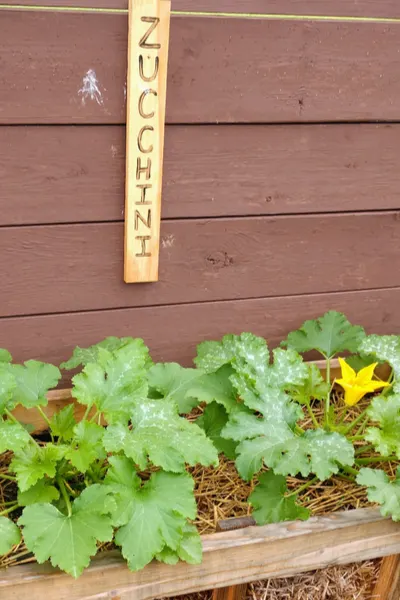
But with bale of straw, you can create a vegetable garden anywhere. And on top of nearly any surface you can imagine!
Here is a look at the 6 key secrets to success to create and grow your favorite vegetables in straw bales.
6 Secrets To Success – Growing Vegetables In Straw Bales
#1 Use Straw Bales – Not Hay Bales
There is a big difference in trying to grow vegetables in straw bales vs. hay bales.
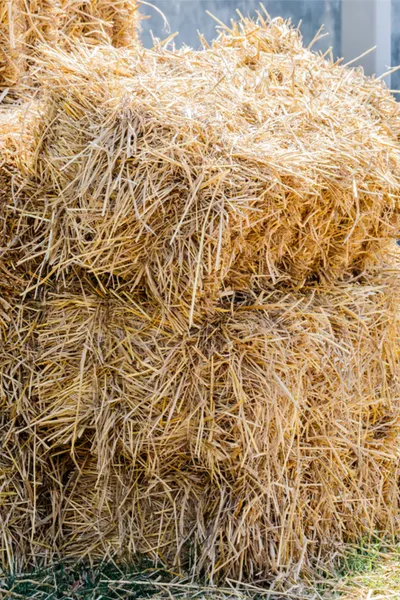
Straw is the left-over stalk of a crop, most often wheat. On the other hand, hay is a grass, and is full of seed heads from the grass.
If you grow in hay bales, your entire crop and bale will be covered in grass and weeds. And all those weeds and grass seeds sprouting take valuable energy from your vegetable plants!
#2 The Myth Of Conditioning
Many straw bale gardeners talk about “conditioning” bales before using. But with the soil-additive method used below (#3), it is simply not necessary. In fact, for us, conditioning only makes the bales weaker for the growing season.
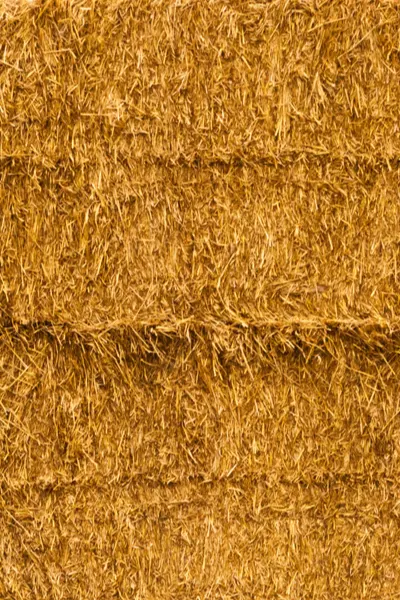
We have successfully grown a myriad of vegetables in straw bales over the years, all without conditioning a single bale. In fact, when it comes to growing both zucchini and cucumbers in straw bales,they were record harvests! (See: Growing Cucumbers In Straw Bales)
#3 Plant With A Fertile Soil Mix
One of the most common mistakes made when trying to grow vegetables in straw bales is not providing soil / nutrients for the plants. By creating planting holes in the bales, and filling them with powerful soil, you all but ensure success.
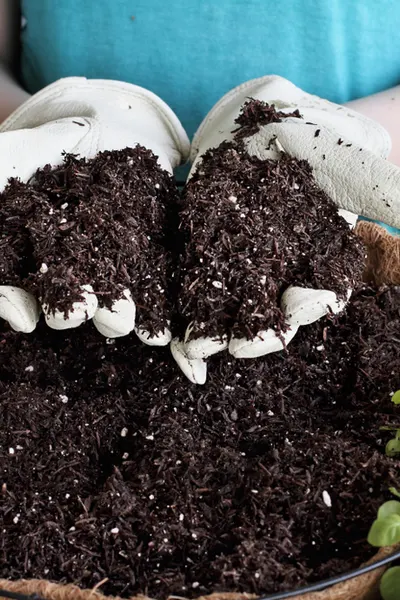
Use a sharp knife or blade to cut out planting holes. We go about 8” deep and 5” around in the bale for each planting hole.
Space plants according to what you will be growing. For our cucumbers, we plant 3 to 5 plants per bale spaces evenly. Tomatoes, depending on the size can be anywhere from 2 to 4 plants.
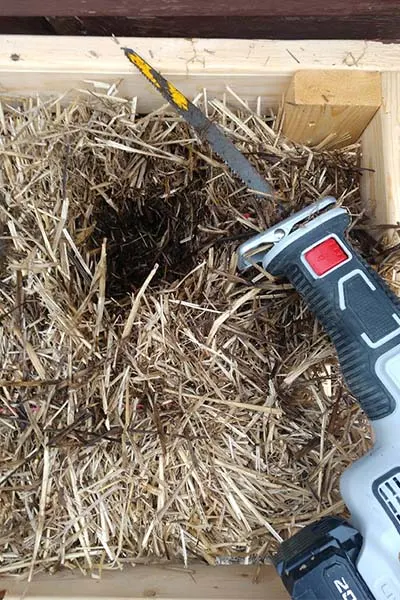
By creating these power filled soil holes, the plants can grab extra nutrients, and keep from drying out between watering too. This soil adding method makes conditioning totally unnecessary as well.
We use our homemade potting soil in our bales, (See : Homemade Potting Soil Recipe) but a high quality potting soil works well too.
#4 Provide Structure For The Bales
Bales left out in the open will tend to disintegrate quickly. In the process, it can leave plant roots exposed, and lead to moisture loss.
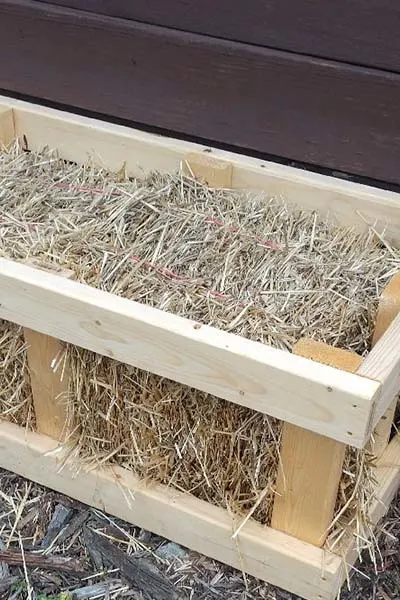
Providing support for your straw bales, whether resting them up against a wall, or with blocks or wood around them is a big key to success. Not only does it keep roots undisturbed, it holds moisture and nutrients in place around the plants.
#5 Water Often
You need to think of straw bale vegetable plants as a container or hanging basket. You wouldn’t go days without watering your potted plants, or disaster would strike. And so it is with growing vegetables in straw bales.
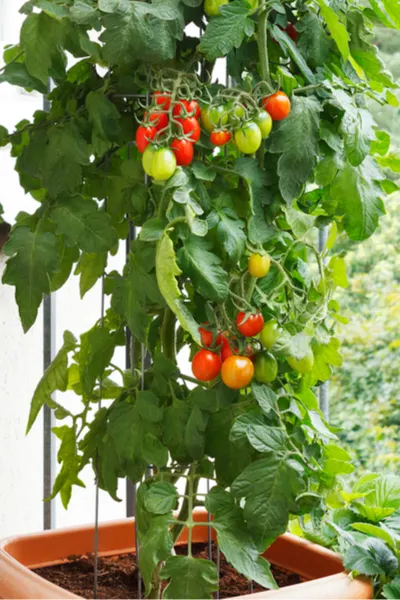
Check the soil moisture daily around your plants to be sure the roots are not drying out.
As the growing season progresses, plants will develop more roots, and the straw will begin to decompose and compress around the soil and plant roots. This will help to retain more moisture, and less frequent watering will be needed.
#6 Fertilizing – A Big Must For Straw Bale Gardens!
Again, just like container plants, vegetables growing in straw bales benefit greatly from a boost of organic nutrients now and then.
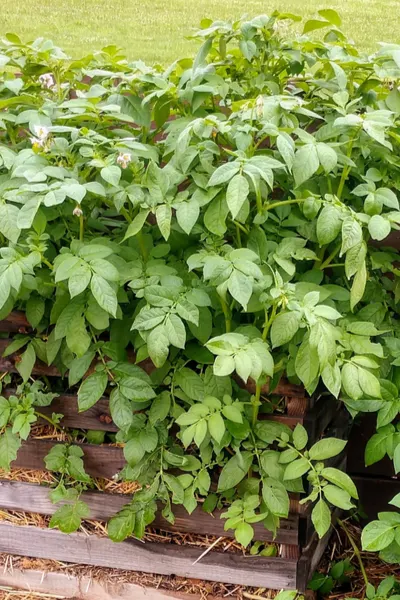
Compost or worm casting tea applied to plants ever few weeks improves plant growth and yields greatly. We also supplement with a 1/2 cup of worm castings applied to the base of plants once a month for the first two months of growth. Product Link : 30 lb. Bag Worm Casting
In fact, the one-two punch has really made all the difference in boosting our plants to produce big yields.
Here is growing vegetables in straw bales with big success – Happy Gardening, Jim and Mary
Jim and Mary Competti have been writing gardening, DIY and recipe articles and books for over 15 years from their 46 acre Ohio farm. The two are frequent speakers on all things gardening and love to travel in their spare time.
As always, feel free to email us at thefarm@owgarden.com with comments, questions, or to simply say hello! You can sign up for our free email list in the subscribe now box in the middle of this article. Follow us on Facebook here : OWG Facebook. This article may contain affiliate links.
